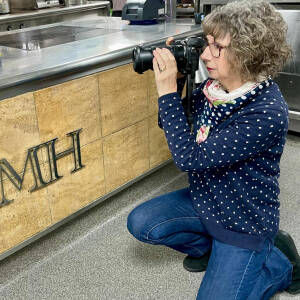The Fascinating World of Mould
We provide sunflower hearts for the birds in our garden, but much of the seed drops to the ground under the feeder. This used to get eaten by pigeons but it attracted a flock of up to 30 feral pigeons and they were making such a mess in the garden and on our conservatory and actually moved into our garden to live! So, we built a fence around the area of spilt seed and then put an open work trellis over it so blackbirds or smaller birds could hop in and feed off the fallen seeds on the ground…but the pigeons couldn’t. This worked perfectly in the summer when the soil under the feeder was largely dry, but now it’s winter the seed keeps going mouldy and grows a grey fur coat about 5 inches high.
B and I went to the Hawk and Owl Trust today on our way to Morrison’s and I asked advice about the problem. As I suspected the mould can be harmful to the birds, so we’ve done as Stuart, the Warden, suggested and removed the top soil and the mould and disposed of it. When we re-design the garden next year we’ll put the feeders over paving so we can clear up any leftover seed and hose it down. In the meantime we’ve put some paving slabs under the feeders.
Anyway…if you haven’t all fallen asleep by now reading this, I thought I would take a macro shot of the mould which is actually quite intriguing close-up, the extra shows the sample I photographed (on my garden trowel for scale) and you can just see the yellow headed stalks in the foreground. Apparently mould is a type of fungus and grows in the form of multicellular filaments called hyphae.


Comments
Sign in or get an account to comment.


